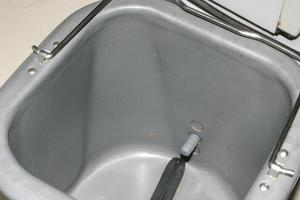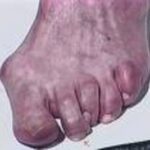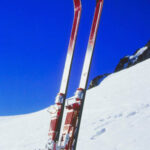Denver musings
Living in Colorado’s Mile High City was an adventure! Working out money saving tips for an unforgettable backyard wedding celebration but not considering the ever changing Colorado weather, vacationing in Breckenridge and finding some delectable restaurants, and of course sticking my toe into the raging stream that is mountain bike racing only to quickly jump back, it was a time to be remembered. Yet it was a job at a bakery and sandwich shop (which no longer exists) near the 16th Street Mall and its various eateries that inspired me to try my hand at baking – high altitude baking.
Of course, the fact that Denver is also called the Mile High City might have tipped me off to the fact that with being a mile high, my prized bread machine French bread recipe might have benefited from some adjustments for said high altitude, but for reasons which I cannot readily remember, this did not dawn on me until my golden loaf came out looking like something the cat sat on.
Dry atmosphere, thin air & atmospheric pressure
In retrospect, considering the fact that bread machines are calibrated for use at sea level, it only makes sense that this needs to be taken into account when measuring the ingredients into the baking container. The environmental components adversely affecting the baking process are quickly numbered: first and foremost is the dry atmosphere; next comes the inescapable variation in air pressure, and last but not least is the thin air.
Bread machine users beware! Evasive action is needed.
The foregoing notwithstanding, you can still have a great loaf of French bread (or any other kind of bread) coming out of your bread machine without despairing! High altitude baking requires very little finesse and with a few simple tips you will be right as rain.
Problem: bread is too dense
This is actually caused by the decreased air pressure. The bread machine will begin its cycle with a mixing segment, followed by a first proofing. It is there that the lack of air pressure wreaks havoc and opens up the possibilities of a dough that rises far too quickly and then collapses onto itself and never gains the aeration required. After another mixing cycle the machine will go to a second, shorter proofing period. Once again the dough will rise, but because it never received the proper aeration in the first place, it will not rise properly and thus result in a dense mix that will bake into a dense loaf of bread.
Solution: increase the salt you add to your dough
Most any recipe calls for some salt, and even though there are some bread machine users who claim they can do without, they most likely do not live in high altitudes. The salt restraints the yeast somewhat and this in turn prevents the quick rising. Slow down the rising of the dough during the first proofing and you will be rewarded with properly aerated dough that will rise to the challenge of a second proofing without a problem. As little as ½ teaspoon added above the amount specified in the recipe will do the trick!
Solution: decrease the yeast
If you just cannot bring yourself to adding a bit of salt to the dough, decrease the amount of yeast you are using. This might require a bit of taste testing, but by and large a reduction of ¼ teaspoon per package of active dry yeast used will show a marked difference in the speed with which the dough rises.
Problem: bread is too coarse
Although not readily apparent, flour contains moisture. High altitudes are almost synonymous with dry air, and no matter how carefully you store your flour, it will lose some of its moisture content.
Problem: bread machine motor stalls
During high altitude baking you might run into some times when it sounds like your bread machine is stalling. You may hear the motor trying to move the paddle but it is unable to maneuver through the dough. This is directly related to the above problem: the flour has dried out to such an extent that the liquids mixed in were not enough to form elastic dough but instead have turned the mixture into a barely moist mush.
Solution: increase the moisture content
Whether the motor is stalling or the bread tastes like cardboard, the odds are good a bit of additional liquid will do the trick. Most recipes call for lukewarm water, although some – usually the flavored breads – will call for milk. Use the liquid indicated in the recipe and initially increase it by one tablespoon per cup of flour. Depending how high up you live, you may need to go up as high as two tablespoons per cup of flour, but it is wise to gradually inch your way up.
You know you have gone too far if the dough – at the end of the mixing cycle – is not forming a nice ball, but instead leaves a lot of matter on the sides of the container or, in the alternative, seems to have formed a puddle at the bottom.
A tasty secret I discovered while trying my hand at high altitude baking with my trusty bread machine is to use unsweetened applesauce instead of the added water; it enhances the dough’s elasticity while also adding the tiniest hint of bite to the bread. Yummy!






